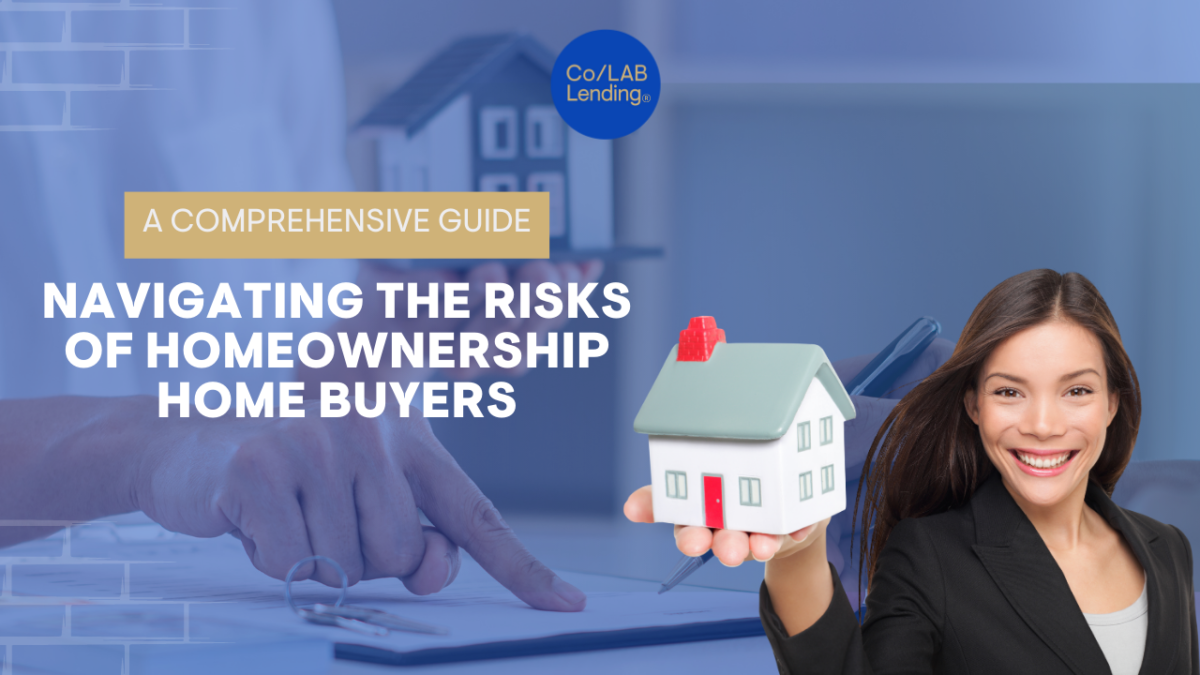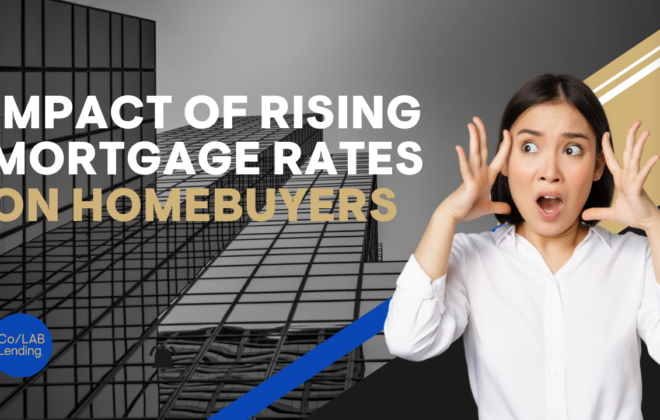Navigating the Risks of Homeownership: A Comprehensive Guide
Understanding the Risks of Homeownership
Owning a home is often seen as a significant milestone and a symbol of personal achievement. However, homeownership is not without its risks. It’s crucial to understand these risks before diving into the real estate market. This article will explore the various risks associated with homeownership and offer some insights on how to mitigate them.
The Risk of Foreclosure
The risk of foreclosure is a serious concern for homeowners. Foreclosure is a legal process that a lender initiates when a homeowner defaults on their mortgage payments. But what does it mean to default on a mortgage? Defaulting on a mortgage refers to the failure to make timely payments on the loan used to purchase a property.
When a borrower defaults on their mortgage, it typically leads to the lender initiating foreclosure proceedings to recover the outstanding loan amount. This can result in the borrower losing their home and damaging their credit score. Missed payments can accumulate, leading to a higher debt burden and potential legal actions from the lender.
According to the Federal Reserve Bank of St. Louis, the foreclosure rate in the U.S. was approximately 0.35% in 2021.
There are potential alternatives to foreclosure, such as loan modifications or refinancing options, which can provide a more comprehensive understanding of the topic. However, these options require proactive communication with the lender and may not be available in all situations.
The Risk of Rising Interest Rates
Another risk associated with homeownership is the potential for rising interest rates. If you have an adjustable-rate mortgage (ARM), your monthly mortgage payments could increase if interest rates rise, potentially making your payments unaffordable. This could lead to financial strain and, in the worst-case scenario, foreclosure.
According to the Mortgage Bankers Association (MBA), as of March 2022, adjustable-rate mortgages (ARMs) made up about 10% of all new home loan applications. This is up from 8% in March 2021. Before you decide on whether or not you will finance your home with a fixed rate mortgage or a adjustable rate mortgage you should consult with your loan officer so that you clearly understand the difference between then and how they can affect your monthly payment.
The Risk of Unexpected Expenses
Homeownership often comes with unexpected expenses. These can include repairs and maintenance, property taxes, and homeowners insurance. According to a recent report by HomeAdvisor, homeowners spent an average of $3,192 on home maintenance in 2020. These expenses can quickly add up and put a strain on your finances, especially if you’re not prepared for them.
One way to mitigate the risk of unexpected expenses is by creating a maintenance budget while house shopping. This involves setting aside a specific amount of money each month for potential home maintenance expenses. For instance, if the average annual cost of home maintenance is $3,192, you might set aside approximately $266 each month ($3,192 divided by 12 months) for this purpose.
However, it’s important to note that the actual cost of home maintenance can vary depending on factors such as the size and age of the home. Therefore, it’s a good idea to adjust your maintenance budget accordingly to better reflect the specific needs of the home you’re considering.
By factoring in a maintenance budget when assessing how much you can afford, you can get a better idea of what your ideal monthly payment should be. This includes your mortgage payment, property taxes, homeowners insurance, and your maintenance budget.
The Risk of Job Loss
Job loss is another risk that homeowners face. If you lose your job and don’t have sufficient savings or an alternate income source, you may struggle to make your mortgage payments. This could potentially lead to foreclosure.
The Risk of a Changing Housing Market
The housing market can be unpredictable and can change rapidly. If the value of your home declines, you could find yourself in a situation where you owe more on your mortgage than your home is worth, a situation often referred to as being “underwater” on your mortgage.
When you’re underwater, it means you owe more on your mortgage than your home is currently worth. This can happen when property values decrease or if you’ve borrowed a significant amount against your home.
If you find yourself in this situation, there are several strategies you can consider:
1. Wait It Out: If you can afford to make your current mortgage payments, the best thing to do might be to wait it out. Over time, the market may recover, and your home’s value could increase.
2. Refinance Your Mortgage: Depending on your situation, you might be able to refinance your mortgage. However, this option typically requires that you have at least some equity in your home.
3. Pay Down Your Mortgage: If you have extra money, you could consider making additional payments towards your mortgage principal. This can help you build equity faster.
4. Improve Your Home’s Value: Making improvements to your home can increase its value, which can help you regain equity.
5. Loan Modification: In some cases, your lender may be willing to modify your loan terms to make your payments more affordable.
6. Short Sale: If you can’t afford your mortgage payments and waiting it out isn’t an option, you might consider a short sale. In a short sale, your lender agrees to let you sell your home for less than you owe on your mortgage.
Remember, it’s important to communicate with your lender if you’re having trouble making your mortgage payments. They may be able to provide you with options to help you avoid foreclosure.
Other Risks Associated with Homeownership
The Risk of Natural Disasters
Natural disasters such as floods, hurricanes, and earthquakes can cause significant damage to your property. While homeowners insurance may cover some of these damages, it often doesn’t cover everything. For instance, most standard homeowners insurance policies do not cover flood damage. According to the Insurance Information Institute, just 15% of American homeowners had a flood insurance policy in 2018.
The Risk of Property Crime
Property crime is another risk that homeowners face. This can include burglary, vandalism, or arson. According to the FBI, there were an estimated 6.9 million property crime offenses in the United States in 2020.
The Risk of Liability for Injuries
As a homeowner, you could be held liable if someone is injured on your property. This could result in costly medical bills or legal fees. Homeowners insurance typically includes liability coverage, but it’s important to understand the limits of your policy.
Mitigating the Risks of Homeownership
While the risks associated with homeownership can be daunting, there are steps you can take to mitigate these risks. This includes saving an emergency fund to cover unexpected expenses or job loss, understanding and regularly reviewing your insurance policies, and keeping up with regular home maintenance to prevent costly repairs. It’s also important to carefully consider your financial situation and the current housing market before deciding to buy a home.
The Importance of Preapproval in Homeownership
Before you start shopping for your dream home, it’s crucial to understand the importance of getting preapproved for a mortgage. This step can significantly help you mitigate financial risks associated with homeownership.
A mortgage preapproval is a lender’s offer to loan you money based on your financial circumstances and specific terms. It’s more than just a casual conversation or a credit score review; it’s a thorough process that involves reviewing and confirming your credit standing, employment, income, assets, and tax returns.
Getting preapproved for a mortgage before you start house-hunting should be your first priority. The preapproval letter shows the seller and the real estate agent advising them that you’re serious about buying the home and know how much you can afford. This can make you a more attractive buyer and could potentially give you an edge in a competitive market.
Moreover, getting preapproved can help you understand how much you can afford, preventing you from falling in love with homes that are out of your price range. It also gives you a chance to address any potential issues in your credit report that could hinder your ability to secure a mortgage.
Additional Resources for Homeownership Risks
Understanding the risks of homeownership is a significant step towards making an informed decision. Here are some resources that can provide more information and help you navigate the journey of homeownership:
1. Consumer Financial Protection Bureau (CFPB): This U.S. government agency ensures that borrowers are treated fairly by lenders. Their website offers a wealth of information on mortgages, including an extensive guide on understanding the mortgage process from start to finish.
2. U.S. Department of Housing and Urban Development (HUD): HUD offers numerous resources for homebuyers, including information on buying a home, avoiding foreclosure, and understanding your rights as a homeowner.
3. Freddie Mac’s CreditSmart: This comprehensive online training curriculum is designed to help you understand, build, and maintain better credit. Good credit is crucial when it comes to securing a mortgage.
4. National Association of Realtors (NAR): NAR is a leading source of real estate information. Their website offers a variety of resources for homebuyers, including articles on the home buying process, mortgage information, and market trends.
Remember, homeownership is a significant financial commitment. It’s essential to understand all the risks involved and take steps to mitigate them. By doing your research and planning ahead, you can make the process smoother and more manageable.
Conclusion: The Balance of Risks and Rewards in Homeownership
While this article has focused on the risks associated with homeownership, it’s important to remember that every coin has two sides. Despite the potential pitfalls, owning a home can also offer numerous benefits that can make it a worthwhile endeavor. Let’s briefly touch on three key advantages of homeownership:
1. Stability and Security: Owning a home provides a sense of stability and security that renting often can’t match. As a homeowner, you have the freedom to create a permanent living space and establish roots in a community. You’re not subject to the whims of a landlord who might decide to sell the property or increase the rent. This stability can be particularly beneficial for families with children, who might appreciate the continuity of staying in the same schools and neighborhoods.
2. Building Equity: Homeownership allows you to build equity over time. Each mortgage payment you make increases your ownership stake in the property. This equity can be a powerful financial tool, potentially serving as a resource for future investments, such as funding education, starting a business, or planning for retirement.
3. Potential for Appreciation: Real estate has historically appreciated in value over the long term. While market fluctuations can lead to periods of falling prices, the overall trend for real estate is upward. As a homeowner, you stand to benefit from this potential appreciation. If your home increases in value, you could make a significant financial gain when you decide to sell.
In conclusion, while homeownership does come with risks, it also offers potential rewards that can make it a rewarding and worthwhile endeavor. The key is to approach the home buying process with a clear understanding of both the risks and benefits. By doing so, you can make informed decisions that align with your financial goals and lifestyle preferences.
Homeownership is a significant step, but with careful planning and consideration of both the risks and rewards, it can be a step that leads to financial growth and stability.
Frequently Asked Questions
1. What is the biggest risk of homeownership?
The biggest risk of homeownership varies depending on individual circumstances. However, some common risks include foreclosure, unexpected expenses, and changes in the housing market.
2. How can I mitigate the risks of homeownership?
You can mitigate the risks of homeownership by saving an emergency fund, understanding your insurance policies, maintaining your home, and carefully considering your financial situation and the housing market before buying a home.
3. What is an “underwater” mortgage?
An “underwater” mortgage is when you owe more on your mortgage than your home is currently worth. This can happen if property values decrease after you purchase your home.
4. What is foreclosure?
Foreclosure is a legal process in which a lender takes possession of a property when the borrower fails to keep up with their mortgage payments. Foreclosure can have serious impacts on your credit and ability to secure a loan in the future.
5. What are some unexpected expenses of homeownership?
Unexpected expenses of homeownership can include home repairs and maintenance, property taxes, homeowners insurance, and potential liability for injuries that occur on your property.
Categories
- Credit (4)
- FHA Loans (3)
- Finances (3)
- First Time Home Buyers (6)
- Grab Bag (7)
- Home Technology (1)
- Homebuying Tips (17)
- Inspiration (1)
- Insurance (3)
- Interest Rates (3)
- Loan Process (1)
- Mortgage Financing (14)
- Motivation (1)
- News (1)
- Press Release (8)
- Renovation (2)
- Self Employed (1)
- Tips & tricks (1)
- Uncategorized (134)
- USDA Loans (1)
- VA Loans (2)




